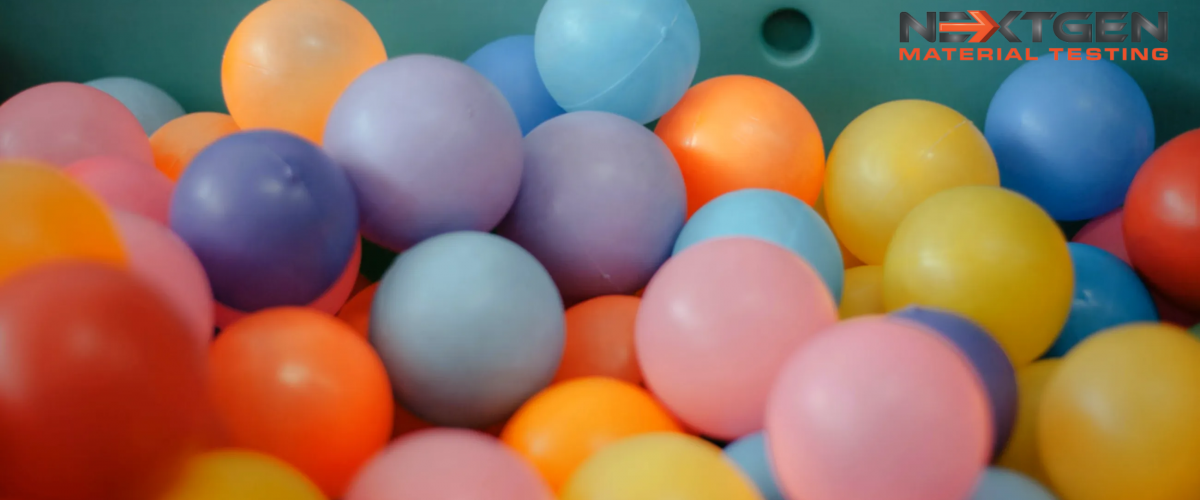What is Environmental Chambers?
Heat, cold, and humidity test chambers (environmental chambers, climate test chambers) are an important tool for testing biological objects, pharmaceuticals, materials, including plastics & rubber, and industrial products. The main purpose of such tests is to evaluate the behavior of samples in conditions that simulate real-life conditions. Developers and manufacturers of industrial products receive the following data from such tests: 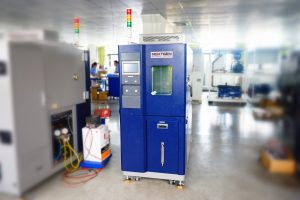
- Setting performance limits – heat, cold, and humidity can significantly affect the physical and mechanical properties of materials. Testing helps to establish the optimal temperature and humidity levels for trouble-free operation of materials and devices.
- Test chambers allow research engineers to determine how new materials behave under different conditions. This helps to improve the formulas and properties of materials, which ensures their optimal use.
- Testing in climatic chambers for product control helps manufacturers ensure quality consistency, make sure that materials can withstand the required conditions and are not damaged during transportation, storage or use in extreme conditions.
Therefore, an environmental chamber is one of the key elements of a modern materials research or quality control laboratory.
Why Environmental Chambers Tests are Crucial for the Automotive Industry
Rubber and plastic testing in environmental chambers is very important in the automotive industry. Rubber and plastic parts, such as tires, seals and body components, need to maintain their shape and mechanical properties at different temperatures, including high and low temperatures. Testing helps to determine how well they can withstand changes in temperature and humidity, which affects their strength, flexibility, wear resistance, and other important characteristics.
For example, the reliability of using different types of tires, winter, summer or demi-season tires, critically depends not only on the mechanical properties of rubber as the main structural material. Important factors here are also the shape of the tread, its wear, the presence and quality of studs, the air pressure in the wheel, and so on. Therefore, it is not enough to test rubber samples in temperature and humidity chambers, followed by rubber hardness testing and other mechanical characteristics. The reliability of such products is checked as a whole in large environmental chambers.
The climate chambers can simulate extreme temperatures, humidity and changing weather conditions such as rain, snow and ice to test tires in different climates. After being exposed to the humidity and temperature chambers, the tires are subjected to further examinations at special test sites or in real-world conditions on vehicles. These include driving on different types of roads (dry, wet, icy), braking, handling, stability at high speeds, etc.
The tires are also subjected to measure the degree of wear and the duration of their use. Parameters such as tread depth and changes in tire weight after a certain mileage are measured.
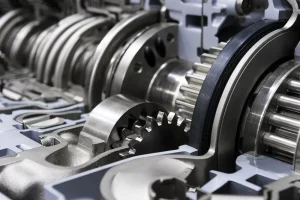
Tire noise tests are designed to achieve three main goals: safety, comfort and noise pollution reduction. In fact, these are important factors, as excessive wheel noise can distract the driver from important environmental sounds, such as horns or other vehicle noise. Noise increases fatigue and thus reduces driver concentration.
This complex testing allows engineers to evaluate the tire’s grip in different conditions and develop tires with improved traction characteristics.
All of these climate chamber and real-world tire tests help manufacturers improve tire quality, ensuring that tires are safe, comfortable and efficient for use on vehicles in a variety of weather and road conditions.
Electronics
Testing electronics components such as circuit boards, chips, batteries, displays, etc. using humidity and temperature chambers helps determine their resistance to the extreme conditions that can occur in electronic devices. Such tests can be crucial, as they guide the design of the device, where the location of heat-sensitive components must take into account the position of the main heat sources, processors, etc., as well as the cooling elements of the system.
Aerospace Industry
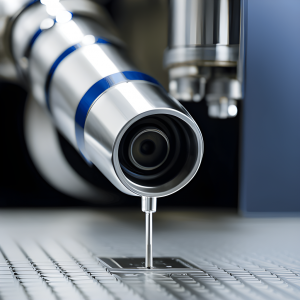 In the aerospace industry, it is important to have materials that can operate in a variety of conditions, including high and low temperatures and low pressures. Aerospace vehicles are exposed to extreme conditions during launch, flight and return to Earth. Testing in environmental chambers ensures that the materials used in aerospace equipment can withstand such conditions.
In the aerospace industry, it is important to have materials that can operate in a variety of conditions, including high and low temperatures and low pressures. Aerospace vehicles are exposed to extreme conditions during launch, flight and return to Earth. Testing in environmental chambers ensures that the materials used in aerospace equipment can withstand such conditions.
The history of spacecraft development and the NASA program has many examples when engineers faced great technical challenges. For example, to carry out the Apollo mission, the first human flight to the Moon, the agency needed equipment to properly test lunar spacecraft. The Space Environment Simulation Laboratory was established in MSC Building 32, where spacecraft and crews were exposed to extreme space conditions, ultimately helping the nation achieve President Kennedy’s goal of landing on the moon in 1969 and returning safely to Earth. In the years that followed, this laboratory participated in numerous other spaceflight programs.
Conditions in the Environmental Chambers
Chamber testing involves the artificially controlled creation of environmental conditions. Environmental chamber testing is a broad category of ways to simulate the effects of climate or excessive exposure to extreme conditions on a product or material over a period of time that can be measured in months, or accelerated down to a few seconds in thermal shock conditions where the product or material goes from extremely cold to extremely hot in a very short period of time (usually only a few seconds).
Here are the conditions in the environmental chambers:
- extreme temperatures
- sudden and extreme temperature fluctuations – thermal shock
- moisture
- electromagnetic fluctuations
- corrosion tests
- salt spray
- rain
- exposure to the sun, causing degradation from ultraviolet radiation
- vacuum
- combination of factors.
Environmental chambers can be cabinets of various sizes, up to the size of a room, which are used both for conditioning the samples under test and for conducting exposure tests on the sample. They can be used to perform tests under certain conditions either once or in a cyclical mode.
Determining the Effects of Environmental Chambers
After conditioning plastic and rubber specimens in heat/cold/humidity test chambers under specified conditions, additional tests are usually performed to determine the effect of these conditions on the specimens.
Mechanical testing of rubber and plastic specimens is performed to determine changes in hardness, elasticity, and wear resistance. In the following, we will look at some typical mechanical properties tests that can be performed.
Tensile and Compressive Strength
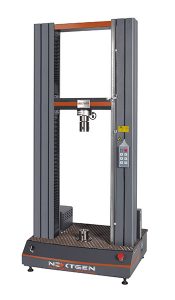 Measuring the tensile strength of a material provides information about its elastic properties. The specimen is stretched to the point where fracture or tearing occurs. This determines the tensile strength, tensile strain, and other parameters.
Measuring the tensile strength of a material provides information about its elastic properties. The specimen is stretched to the point where fracture or tearing occurs. This determines the tensile strength, tensile strain, and other parameters.
Compression is used to determine the behavior of a material in compression before and after the explosion in environmental chambers. The sample is subjected to a compressive force, and its ability to deform and compressive strength is measured. This test allows you to determine the maximum compressive strength, compression behavior, and stability of the material under load.
NextGen supplies universal equipment for such measurements for tension, compression, and flexure. For such studies, please note the following offers:
- EML Class A for plastics
- EML Class B for plastics and rubber
- EML Class C for plastics and metals
The flexural strength test checks the behavior of a material under bending action, which allows determining the flexural strength, elastic characteristics and other parameters.
Resistance to Cut Growth
This is another characteristic of vulcanized or synthetic elastomers can be done with:
– The Ross Flex Tester from NextGen is specifically designed for such studies.
In impact resistance tests, i.e., the material’s resistance to impact loads, the sample is subjected to an impact of a certain force or by sliding. Its ability to absorb the impact energy before fracture is measured. This test allows you to evaluate the toughness and stiffness of a material, as well as its ability to withstand impacts and prevent crack propagation. Here you can find a detailed overview of such tests. Please also take a look at the relevant equipment from NextGen:
– Class J Impact Testing System
Abrasion and scratch resistance tests evaluate a material’s resistance to wear and tear when it is in constant contact with other surfaces or friction. A sample is subjected to cyclic friction or scratching movements and changes in its weight, scratch depth, or physical properties are measured after a certain number of cycles. Since it is the surface of the material that is exposed to the greatest impact in the climate chamber, such tests allow us to assess the impact of chamber conditions on the material’s resistance to wear and determine its service life.
The ideal tool for conducting wear resistance tests is the Linear Taber Abrasion Tester from NextGen.
It is versatile, as it can be used for two testing methods at once: abrasion and scratch resistance.
Dynamic Mechanical Characteristics
Rheometers determine various dynamic mechanical properties of rubber and other elastomers, which help determine the material’s behavior and characteristics during deformation. These measurements allow you to determine the elastic modulus, tensile and compressive strength, wear resistance, coefficient of friction, and other parameters that are important for determining the quality and functionality of rubber and plastic.
NextGen Material Testing supplies its rheometer, the RPA Ultra advanced rubber process analyzer. You can learn more about this product in our blog.
Rubber and Plastic Hardness Testing
Another key factor that is checked after climate chamber testing to ensure the reliability of product use is hardness. This factor for rubber and plastic may depend significantly on the treatment in climate chamber at high humidity and temperature. Hardness testing is performed on systems such as:
– Digi Test II, which automatically operates in the Shore, IRHD and VLRH hardness scales. Read more about this system in our blog.
– The HDA 120 performs sequential hardness and density measurements on plastic and rubber samples in automatic mode. The importance of checking the change in density after conditioning in environmental chambers is that a change in density can be a sign of structural changes in the material, its decomposition, or interaction with moisture.
Find more about NextGen’s texture equipment information for rubber and plastic.
NextGen supplies the most important equipment for testing the mechanical properties of plastics and rubber before and after conditioning in climate chambers.
The company also offers the NextGen Environmental Chambers NG-EC 100, 150, 225, 408, 1000 line to cut growth. Read more about them below.
Environmental Chambers from NextGen
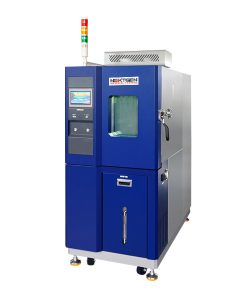
In the Environmental Chambers NG-EC100, NG-EC150, NG-EC225, NG-EC408, NG-EC1000 series, the number refers to the height of the chamber in mm. The smallest camera measures 20″ x 20″ x 16″ and the largest camera measures 39″ x 39″ x 39″ (W x H x D), so you can choose the best size for your needs. The chamber body is made of stainless steel with a heat and moisture resistant coating to prevent excessive energy consumption and temperature fluctuations. The set temperature is monitored by temperature sensors and maintained by circulating air ducts connected to heaters and a cooling system.
The system is controlled via a 7-inch color TFT touchscreen. The sample racks are also made of stainless steel, their position in the chamber can be adjusted and in the maximum version they can support samples with a mass of up to 100 kg.
The temperature range is -40°C to +150°C (-40°F to +302°F) with precise temperature control and distribution.
The door also has a constant temperature belt, which is used to increase the temperature and defrost depending on the set conditions. They are equipped with a viewing window that has a fog removal function.
The viewing window is equipped with a set of moisture-proof lighting fixtures to ensure clear observation of the samples in the box under all operating conditions. The lamp has an automatic shut-off function to extend the life of the bulb.
For cooling, mechanical compression cooling is used – the compressor is started as needed for a certain time to maintain the set temperature. Refrigerants used: R404A / R23, DuPont are environmentally friendly and meet international environmental requirements.
For heating, a high-quality nickel-cadmium alloy wire heater is used, controlled by a non-contact solid-state controller that turns on the heater only if the temperature drops from the setpoint during measurement.
NextGen strives to meet the requirements of every materials research laboratory, so we have created everything you need to perform your Temperature/Humidity Plastic & Rubber Testing. Do not hesitate to contact us if you have any questions about your rubber and plastic testing needs.
